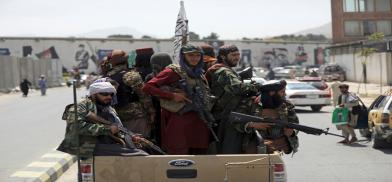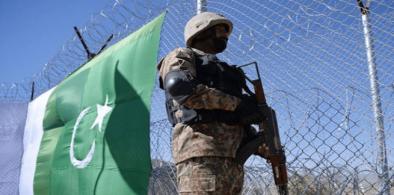The American debacle in Afghanistan: Did US negotiators know early in 2020 that the Taliban could take over easily?
It is hardly surprising that in a mockery of the so-called US intelligence projection that Kabul could fall in 30 to 60 days, the capital caved in within 48 hours, writes Mayank Chhaya for South Asia Monitor

There is evidence to suggest that the American negotiators on the peace talks with the Taliban in January and February last year had some clear inkling that the latter could easily take over Kabul. A rather damning assessment of the handling of Afghanistan by successive governments since President George W. Bush in 2001 ordered the country’s invasion and occupation is contained in the August 2021 report by the Special Inspector General for Afghanistan Reconstruction or SIGAR.
It is remarkable that even in the midst of the US negotiations with the Taliban for a peace deal under former President Donald Trump at the beginning of last year, it was reasonably obvious to the parties at hand that the Taliban was in a position to take over the whole country.
The question of whether the US negotiators knew as early as February 2020, or even earlier, that the Taliban was under no pressure to offer more than bare minimum guarantees to clinch a peace deal in Doha, the capital of Qatar, is a crucial one in this context.
The answer to this question appears to be a clear yes as the SIGAR report titled "What We Need to Learn: Lessons from Twenty Years of Afghanistan Reconstruction" contains rather deeply troubling observations regarding the debacle that Afghanistan has seen over the past decade at the very least. It has become even more devastatingly plain in the past week or so as seen in the cakewalk takeover of Kabul by the Taliban.
By the time the Taliban came to the negotiating table with the Trump administration in 2020, it had been ascendant on the battlefield for more than a decade, according to SIGAR.
The 140-page report also says that the Taliban “was poorly motivated to indulge (in) peace talks beyond what was necessary to secure the release of more than 5,000 prisoners, ensure the removal of US and UN sanctions, accrue international legitimacy, and claim credit for negotiating the departure of the US forces.”
“Notably, none of those objectives required compromise with the Afghan government,” SIGAR says.
US lacked fundamental understanding
Quite stunningly, the SIGAR report quotes one senior Afghan government negotiator as saying, “[The Taliban] thought they were there just to discuss the terms of [the government’s] surrender. They said, ‘We don’t need to talk to you. We can just take over.’”
As it turned out in the past couple of weeks or so, the Taliban could indeed just take over Afghanistan notwithstanding that the US has spent USD 145 billion trying to rebuild the country, its security forces, civilian government institutions, economy, and civil society. And the Department of Defense (DOD) has also spent USD 837 billion on war-fighting. Of course, the total amount of taxpayer dollars spent on a war that has brought nothing but defeat and ignominy is said to be over USD 2.26 trillion.
The SIGAR report makes several important points that stand out in sharp relief because of the hugely problematic withdrawal of the US troops that left America’s local Afghan allies in extraordinary distress and even mortal danger.
For instance, the report quotes Douglas Lute, who coordinated Afghanistan strategy at the National Security Council from 2007–2013, as saying, “The US is devoid of a fundamental understanding of Afghanistan. We didn’t know what we were doing.
“We didn’t have the foggiest notion of what we were undertaking. . . . It’s really much worse than you think. There [was] a fundamental gap of understanding on the front end, overstated objectives, an overreliance on the military, and a lack of understanding of the resources necessary.”
Overreliance on military, no strategy
Speaking of overreliance on the military, consider these numbers. The US State Department which is supposed to be the lead agency on Afghanistan has a budget and staff that “pale in comparison” to those of the Department of Defense (DoD).
“This year Congress appropriated USD 696 billion for Defense, compared to USD 56 billion for State. (The) State has a total of only 24,000 American employees, a number that is fewer than the number of US troops stationed in South Korea alone and which is dwarfed by the 1.4 million troops in the US military globally. State’s 7,900 foreign service officers — the backbone of the agency— only slightly outnumber the musicians employed in Defense bands,” SIGAR says.
As SIGAR points out, throughout the 20-year campaign, there were recurring complaints by US officials and commentators that there was no strategy.
“For example, in 2009, when then-Vice President Joe Biden returned from a trip to Afghanistan, he told President Barack Obama, “If you ask 10 of our people what we’re trying to accomplish here, you get 10 different answers. This has been on autopilot,” the report says.
In an extraordinary indictment, SIGAR also points out that "The US government consistently underestimated the amount of time required to rebuild Afghanistan and created unrealistic timelines and expectations that prioritized spending quickly. These choices increased corruption and reduced the effectiveness of programs.”
It says, “The US government continuously struggled to develop and implement a coherent strategy for what it hoped to achieve.”
Poor manpower deployment
In an observation that goes to the heart of how the Afghan war has been handled, SIGAR says, “The US government’s inability to get the right people into the right jobs at the right times was one of the most significant failures of the mission. It is also one of the hardest to repair. US personnel in Afghanistan were often unqualified and poorly trained, and those who were qualified were difficult to retain.
“DoD (Department of defense) police advisors watched American TV shows to learn about policing, civil affairs teams were mass-produced via PowerPoint presentations, and every agency experienced annual lobotomies as staff constantly rotated out, leaving successors to start from scratch and make similar mistakes all over again. These dynamics had direct effects on the quality of reconstruction.”
What had begun in 2010 as the Taliban’s gradual ascendancy was by 2017 at a stage where the violent group barely felt any pressure to yield to any major demands from the US.
It is hardly surprising that in a mockery of the so-called US intelligence projection that Kabul could fall in 30 to 60 days, the capital caved in within 48 hours.
What happens to the US policy on Afghanistan now is gravely uncertain especially with the Taliban now in control of not just Kabul and the rest of the country but even in possession of a huge cache of often unopened arms and ammunition left behind by the departing American forces.
Even as President Biden remains stubbornly wedded to the overall rightness of his decision, there is already apprehension that this could be an albatross around his political legacy.
(The writer is a Chicago-based journalist, author and filmmaker. The views expressed are personal. He can be contacted at mcsix@outlook.com)



















Post a Comment